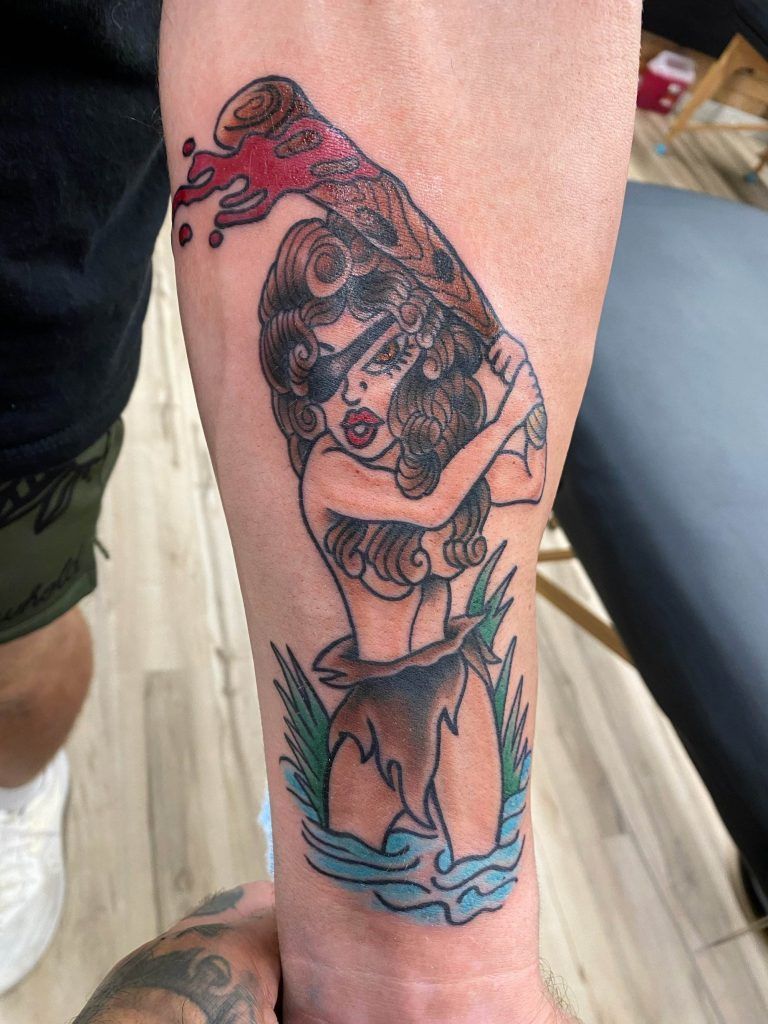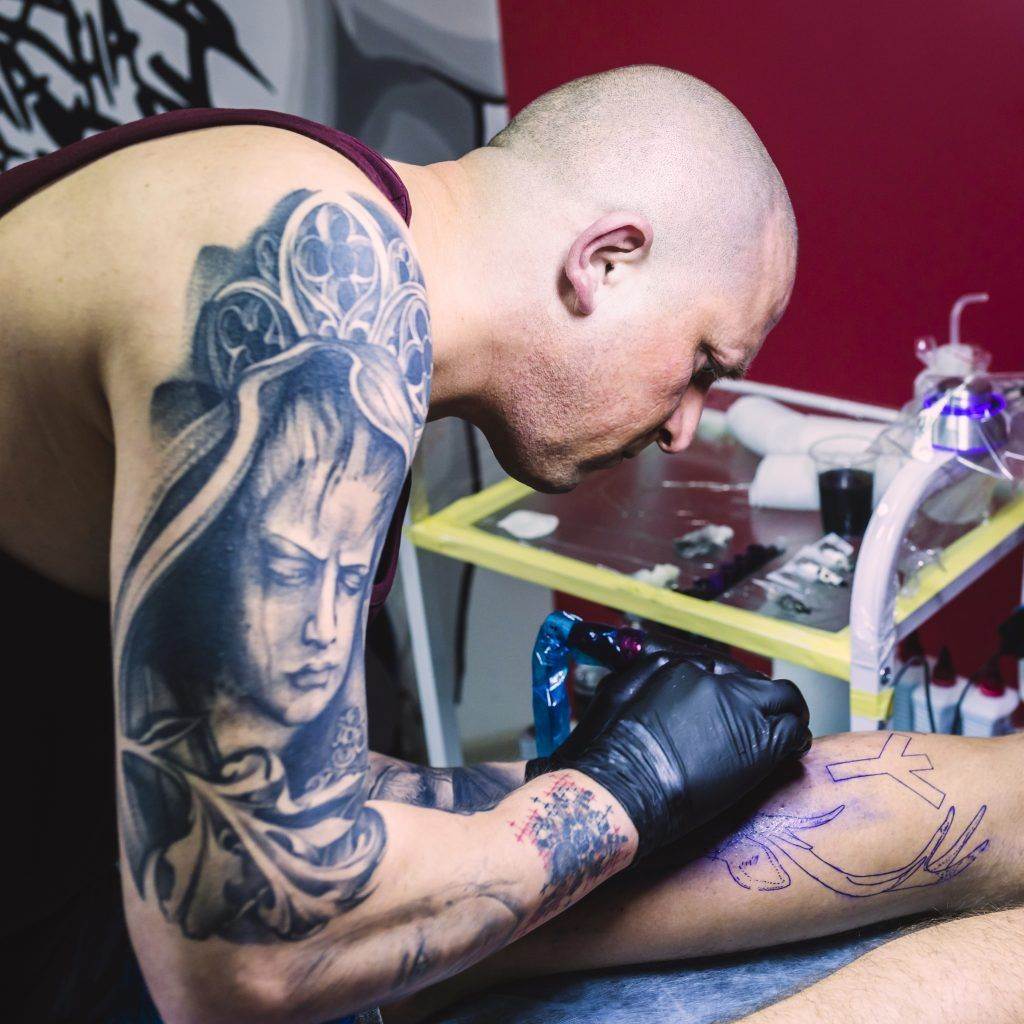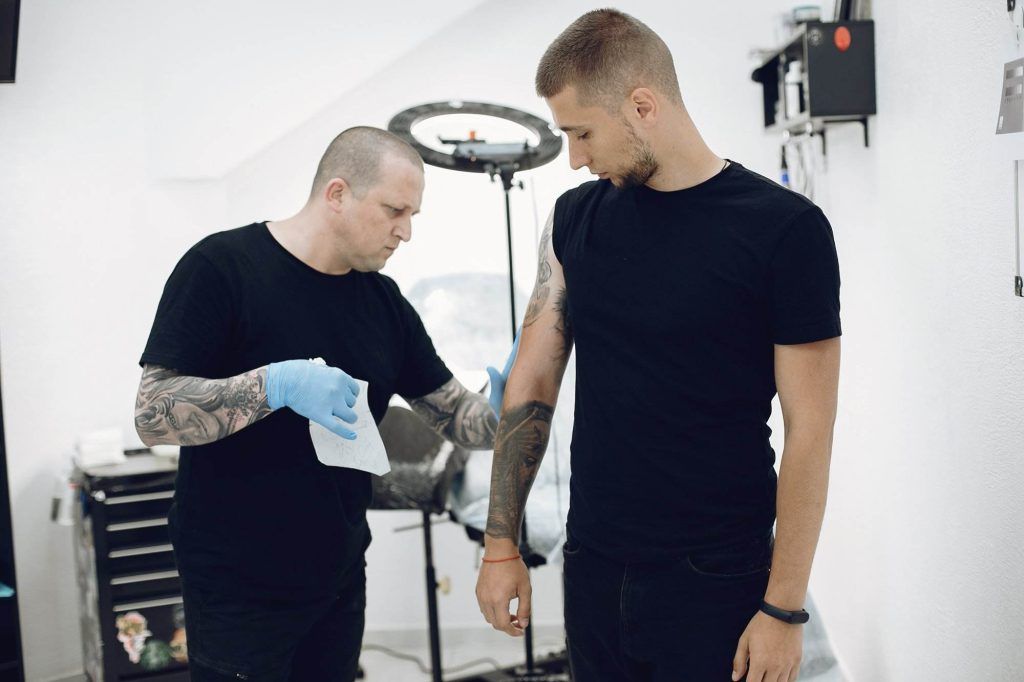Understanding Matching Tattoos
Meaning and Symbolism
Matching tattoos often symbolize a deep connection between individuals, whether they are friends, romantic partners, or family members. These tattoos serve as a visual representation of shared experiences, beliefs, or significant moments in a relationship. When selecting a design, it is essential to consider its meaning to both parties involved. Some common themes in matching tattoos include:
- Friendship: Tiny symbols like lock and key or two halves of a heart can signify a strong bond between friends.
- Love: Couples might choose designs like infinity symbols or quotes that resonate with their relationship.
- Family: Family members frequently opt for designs that reflect their lineage, such as family crests or matching initials.
Ultimately, the meaning behind matching tattoos is personal and can only be fully understood by those wearing them. This intimate nature adds a layer of significance, reinforcing the bond between the individuals involved.
Importance of Communication
Communication plays a crucial role in the matching tattoo process. Before committing, it’s vital for both parties to discuss their thoughts, feelings, and expectations regarding the tattoo. Here are some key points to consider during these discussions:
- Design Preferences: Ensure both individuals have aligned preferences in terms of style, color, and theme.
- Meaning: Discuss the meaning behind the chosen design to ensure it resonates with both individuals, enhancing its significance.
- Placement: Consider where each person would want their tattoo placed, as this can affect how the design looks and its visibility.
During these conversations, an open and honest dialogue is essential. By sharing opinions and respecting each other’s views, both individuals can contribute to a meaningful tattoo experience. For instance, if one person loves intricate designs while the other prefers simplicity, finding a balance can lead to a design that represents both aesthetic preferences. Engage in discussion until reaching a consensus, ensuring both parties feel comfortable with the final decision. By cultivating strong communication, individuals can ensure that their matching tattoos not only represent their relationship but also embody their unique personalities.
Choosing the Right Design

Personalization and Customization
Once the meaning behind matching tattoos has been established, the next step is to focus on personalization and customization. This is where the fun begins, as individuals can express their unique styles while still retaining the essential connection to their partner or friend. Personalization can turn a simple design into something deeply memorable. When customizing matching tattoos, consider the following aspects:
- Colors: Choose colors that resonate with both individuals. For instance, if one prefers bold colors while the other likes pastels, brainstorm ways to incorporate both into the design.
- Fonts and Text: If including words or quotes, opt for a font style that reflects both personalities. The same phrase in different fonts can convey different emotions.
- Symbols: Custom symbols can be infused with personal meaning. Think about elements that represent significant memories or shared experiences, such as a favorite flower or landmark.
Engaging in this creative process together can enhance the bond, allowing for moments of collaboration and fun. Each element chosen will make the tattoo distinct to the wearers while still being unified.
Size and Placement Considerations
Once the design is settled, it’s essential to consider the size and placement of the tattoos. This choice can significantly influence both the aesthetic and the personal impact of the tattoo. Every placement can convey its own meaning, and size plays a critical role in how the tattoo is perceived. Here are some considerations to keep in mind:
- Visibility: Do both individuals prefer visible tattoos, or would they rather keep them discreet? Wrist and forearm tattoos are often readily seen, while back or thigh tattoos can be more personal and hidden.
- Size: Larger tattoos can allow for more intricate designs, while smaller tattoos might be more subtle. Ensure both parties are comfortable with the size they’re opting for.
- Aesthetic Appeal: Consider how the design will flow with the natural lines of the body. Some designs may look better on specific areas, so it’s worth trying out temporary placements with stickers or markers before committing.
Ultimately, the right design, size, and placement can lead to an experience that feels satisfying and meaningful for both individuals. Taking time to explore these factors will ensure that the final decision is one both parties cherish for years to come.
Researching Tattoo Artists

Experience and Style
With the design and placement finalized, the next crucial step in the matching tattoo journey is selecting the right tattoo artist. The experience and style of an artist are paramount in ensuring that the vision comes to life just as imagined. When researching tattoo artists, consider these factors:
- Portfolio: Examine the artist’s portfolio, which showcases their previous work. Look for consistent quality and attention to detail. Pay particular attention to designs similar to what you plan to get.
- Specialization: Some artists specialize in specific styles, such as traditional, watercolor, or realism. Choose an artist whose style aligns with your chosen design. For example, if you want a whimsical, colorful tattoo, locate an artist renowned for vibrant, playful designs.
- Experience: Consider how long the artist has been practicing. An experienced artist can offer valuable insights, and their expertise can be a significant advantage during the tattooing process.
By understanding an artist’s experience and style, individuals can confidently select someone who will make their tattoo vision a reality.
Client Reviews and Recommendations
In addition to assessing experience and style, here’s where client reviews and recommendations can provide insight into the artist’s overall performance. This feedback is vital in determining whether an artist is the right fit.
- Online Reviews: Platforms like social media, tattoo forums, and review sites can provide a wealth of information. Look for patterns in feedback—constructive criticism and overwhelming praise can both inform your decision.
- Word of Mouth: Personal recommendations from friends or family can lead to trusted artists. If someone has a matching tattoo they love, ask about their experience, including the artist’s professionalism and cleanliness.
- Consultation: Visit the studio for an initial consultation. This casual meeting offers a chance to discuss your design, feel out the atmosphere, and evaluate the artist’s demeanor. It’s also a great time to ask questions and address any concerns.
Researching tattoo artists thoroughly not only leads to a successful tattoo experience but also ensures that the results align with the hopes and expectations attached to the meaningful design. The right artist can turn a simple idea into a stunning piece of art that embodies the bond between the individuals sharing the matching tattoos.
Planning the Tattoo Session

Scheduling Appointments
After selecting the perfect artist and finalizing the design, it’s time to plan the actual tattoo session. Scheduling appointments requires careful coordination, especially when booking matching tattoos for two people. Clear communication is essential to ensure both parties can secure a time that works for them. Here are key steps to consider when scheduling:
- Availability: Check schedules for both individuals to ensure that they can attend the session together. It’s ideal to book the same day and time to strengthen the experience.
- Artist’s Schedule: Tattoo artists can be in high demand; therefore, it’s advisable to book well in advance. Many reputable artists may have waiting lists, so be prepared to plan ahead.
- Duration: Discuss how long the session might take with the artist. This can vary based on the complexity and size of the tattoo. Ensure both parties block out enough time in their calendars for a comfortable session.
Being proactive about scheduling can lead to a seamless and stress-free experience, allowing individuals to focus on enjoying this significant moment.
Preparing Mentally and Physically
As the appointment date approaches, it’s vital to prepare both mentally and physically for the tattoo session. A little preparation can go a long way in ensuring a positive and comfortable tattooing experience. Here’s how to get ready:
- Rest Well: Get a good night’s sleep before the session. Being well-rested can help manage pain and anxiety levels during the tattooing process.
- Hydration and Nutrition: Drink plenty of water in the days leading up to the appointment, and eat a wholesome meal on the day of your tattoo. This will ensure that your body is energized.
- Pain Management: If either individual is nervous about discomfort, consider discussing pain management options with the artist. Some people find comfort in using numbing creams or distraction techniques during the procedure.
Additionally, practicing relaxation techniques, such as deep breathing or meditation, can help ease nerves. Reminding each other that this is a shared experience can be uplifting—carving out a moment for fun supports mental preparedness. By carefully planning the tattoo session, from scheduling to mental preparation, individuals can embrace the experience with excitement, paving the way for a meaningful and memorable tattoo journey.
Maintaining Individuality
Balancing Personal Preferences
As the journey towards matching tattoos progresses, an important element to consider is maintaining individuality. While these tattoos symbolize a shared bond, it’s essential for each person to express their personal style and preferences. This balance enhances the uniqueness of each tattoo while still connecting the two individuals. Achieving this balance can involve:
- Personal Insights: Take time to discuss what specific elements each person loves. Perhaps one person is drawn to geometric designs while the other prefers floral motifs. Finding a way to combine these favorites can lead to a harmonious design that reflects both personalities.
- Subtle Differences: Even if the tattoos are based on the same design, small variations can make a significant difference. Consider altering colors, sizes, or even slight design tweaks that cater to each individual’s taste. For example, if one person wants a vibrant background, the other might prefer a plain one to highlight the primary design.
- Different Placements: While both individuals may choose the same design, differing placements can also showcase personal style. One might choose to have their tattoo on the arm, while the other prefers it on their ankle. This subtle difference can still visually connect the tattoos without compromising individuality.
By having open discussions about personal preferences, both individuals can feel a sense of ownership over their tattoo, making the entire experience even more meaningful.
Incorporating Unique Elements
In addition to balancing preferences, incorporating unique elements can elevate the significance of matching tattoos. This ensures that while the tattoos symbolize a connection, they also retain a personal touch that reflects each individual’s story. Here are some creative ways to infuse uniqueness:
- Symbolic Additions: Adding personal symbols that resonate with each individual can create a deeper connection. For instance, if one person has a love for music, incorporating a musical note can personalize the design.
- Customized Quotes: If a specific quote is included in the tattoo design, consider slightly changing the wording for each person. This can create a brighter distinction while maintaining the overall theme of unity.
- Incorporating Life Events: Each individual may want to reference significant events or memories in their designs. Whether it’s a date, a specific color, or an image representing a memorable trip, these elements can honor each person’s unique journey.
By reinforcing individuality through personalized touches, matching tattoos become not just a representation of a bond, but a tribute to each individual’s story and experiences. Ultimately, the combination of togetherness and uniqueness transforms matching tattoos into something truly special for each individual involved.
